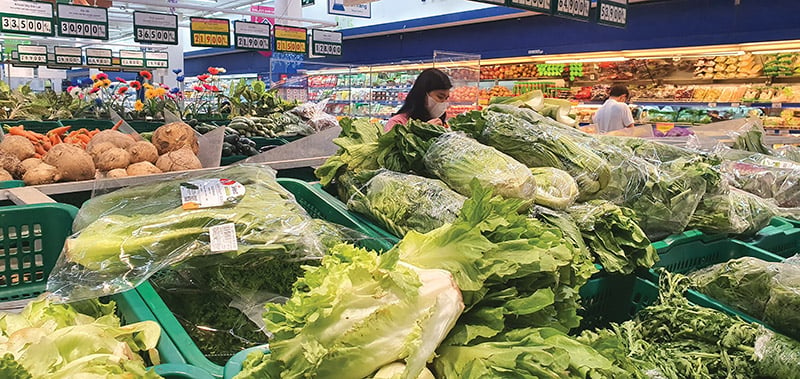 |
| Fruits and vegetables seem to have been hit by the new tariffs immediately. Photo: NK |
Unlike clothing, household appliances, machinery, vehicles, etc., which are only affected when there is a shortage of goods on supermarket shelves or when inventory is low, the impact of the tax schedule will only be felt when prices increase. On the contrary, agricultural products - from fresh food, vegetables, fruits to essential foods, etc. - seem to feel the impact of the new tax schedule immediately. The tax is looming, the futures prices of agricultural exchanges are in turmoil, although many exchanges have recovered a bit after receiving news of the 90-day suspension. The impact is "obvious", but whether agricultural prices will increase later or not depends on whether production costs are likely to be higher, transportation costs, processing, packaging costs increase, etc., requiring a certain delay, high value but not sure if profits will follow!
However, it should be understood that as long as US tariffs remain suspended and unclear, as in the case of the exclusion of certain electronic products, such as smartphones and computers, from the reciprocal tariffs announced by the US on April 12, prices in agricultural markets will be more unstable and have a negative impact on agricultural production.
Many experts estimate that the value of the US agricultural and related industries in 2023 will be around 1,500 billion USD. The impact of the US's reciprocal tariffs could cause significant damage to US farmers. Agricultural products that are strong in US exports, such as soybeans, corn, cotton, etc., could face difficulties when partners reimpose "reciprocal" tariffs. About 15% of US corn exports each year may now be stagnant because China - the country with the largest demand for US corn imports - has imposed retaliatory tariffs of up to 125%.
The US is an important and valuable market for many Vietnamese agricultural products. In 2024, this country imported the largest amount of pepper from Vietnam with nearly 73,000 tons, worth 407.6 million USD, accounting for 28.9% of Vietnam's export market share of this item. This is also the second largest importer of cinnamon with a volume of over 11,000 tons, accounting for 11.1% of the export market share. In addition, the US is the number 1 importer of cashew nuts from our country with more than 180,000 tons in 2024, worth more than 1 billion USD, accounting for 27% of the market share. Also in 2024, Vietnam's coffee exports to the US will reach 6.1% of the market share with 81,500 tons, earning 323 million USD.
If we stop at those numbers, some people think that the impact is only “moderate”. No, the impact is much more profound because many countries in Europe and Asia buy agricultural products from Vietnam to process and export those products to the US. Many agricultural and food processing companies in the world import goods from Vietnam, process them according to their quality and sell them under their own brands. Many European brands of pepper, cashew nuts or even coffee are sold in US supermarkets but the ingredients are partly or partly from Vietnam.
So don't be too happy about the US lowering tariffs from 46% to 10% for Vietnamese goods, because the purchasing power of other countries' customers may weaken if they are hit with reciprocal tariffs like Vietnam, either more or less.
Before the "annoying" tariff, most agricultural raw materials imported into the US had a tax rate of 0%. However, in less than three months, the exporting country must pay a 10% "counterpart" tax calculated on the CIF base unit price, that is, the cost of delivery on board (FOB) + insurance + freight. Suppose we sell 1 ton of pepper for 5,000 USD/ton FOB, then when it arrives in the US, the buyer must add 500 USD, meaning the goods in circulation in the US have an official price of 5,500 USD/ton.
With an additional 10%, the producing and exporting countries themselves are already discouraged from selling, not to mention the buyers (outside the US) who also have to pay the same tax.
When it comes to lowering production costs and offering competitive prices, when is the right time to lower them when world prices are always fluctuating and tax policies and import-export policies of many countries are not stable, such as in the case of India, which tightened and then loosened its rice export policy, causing rice prices to plummet from high to low.
A market with too many levels, intermediaries, too many "levels" of fees, Vietnamese gardeners and export enterprises have long lived and fought with the "elasticity" of countless agents distributing agricultural materials to many niches for transportation, logistics... then when it comes to this "corresponding" tax, if it exists, who knows how long it will exist!
Faced with the difficulties caused by the reciprocal tariffs, the North American Coffee Association (NCA) has repeatedly asked the Trump administration not to impose tariffs on raw coffee imported from Central and South American countries. NCA President William “Bill” Murray confessed that “every dollar of coffee-related imports creates $43 in value for the US economy and coffee supports 2.2 million jobs in this country, and is the most favorite drink of Americans”. He also hopes not only for coffee but also for many other agricultural products because the US is a country that exploits the highest added value for many agricultural products.
Some French friends said they had to pay 30 euros for each kilo of black pepper, nearly 5.5 times higher than the price of a kilo of black pepper sold by export suppliers. Of course, it is impossible to compare 1 to 1 because when buying goods back home, buyers have to spend a lot of money and effort to increase the value of the product and they have to spend tens of millions of euros/US dollars on marketing to bring the purchased goods into the most stable and best supply chain.
That is how our agricultural product importers make money. Of course, no one is foolish enough to tell the “root” seller to do that and lose their business. But the seller, our own gardeners, either forgets or does not have enough financial and material resources to do that.
For many years, they planted and cut, cut and planted again because they only knew that the high price would be worth it, the low price would be abandoned. A Japanese lotus field grows lotus roots. The owner harvests and sorts them very carefully. Some roots can be sold for several hundred dollars per kilo, and some can be sold for a few cents, but the steps of food hygiene during harvesting, grading, attractive packaging, inviting "big" customers to fly in from other countries to try the products... to sell the products, and to enter the right supply chain have helped the owner get rich and make a sustainable living from the profession.
The US “reciprocal” tax has more or less helped farmers around the world wake up, including Vietnam. That will be an obstacle, and there will be many other obstacles lurking for Vietnamese agricultural products. Finding a way or teaching farmers how to overcome the difficulties they will encounter in the export agricultural product business is to help them enter small and large domestic and foreign supply chains, bringing goods to the right address of consumers, at which stage in the supply chain, then the farmers’ livelihood will be more secure. Being happy because the price has increased for a while is not as good as living happily forever with the garden you produce.
Fruits and vegetables seem to have been hit by the new tariffs immediately. Photo: NK
Unlike clothing, household appliances, machinery, vehicles, etc., which are only affected when there is a shortage of goods on supermarket shelves or when inventory is low, the impact of the tax schedule will only be felt when prices increase. On the contrary, agricultural products - from fresh food, vegetables, fruits to essential foods, etc. - seem to feel the impact of the new tax schedule immediately. The tax is looming, the futures prices of agricultural exchanges are in turmoil, although many exchanges have recovered a bit after receiving news of the 90-day suspension. The impact is "obvious", but whether agricultural prices will increase later or not depends on whether production costs are likely to be higher, transportation costs, processing, packaging costs increase, etc., requiring a certain delay, high value but not sure if profits will follow!
However, it should be understood that as long as US tariffs remain suspended and unclear, as in the case of the exclusion of certain electronic products, such as smartphones and computers, from the reciprocal tariffs announced by the US on April 12, prices in agricultural markets will be more unstable and have a negative impact on agricultural production.
Many experts estimate that the value of the US agricultural and related industries in 2023 will be around 1,500 billion USD. The impact of the US's reciprocal tariffs could cause significant damage to US farmers. Agricultural products that are strong in US exports, such as soybeans, corn, cotton, etc., could face difficulties when partners reimpose "reciprocal" tariffs. About 15% of US corn exports each year may now be stagnant because China - the country with the largest demand for US corn imports - has imposed retaliatory tariffs of up to 125%.
The US is an important and valuable market for many Vietnamese agricultural products. In 2024, this country imported the largest amount of pepper from Vietnam with nearly 73,000 tons, worth 407.6 million USD, accounting for 28.9% of Vietnam's export market share of this item. This is also the second largest importer of cinnamon with a volume of over 11,000 tons, accounting for 11.1% of the export market share. In addition, the US is the number 1 importer of cashew nuts from our country with more than 180,000 tons in 2024, worth more than 1 billion USD, accounting for 27% of the market share. Also in 2024, Vietnam's coffee exports to the US will reach 6.1% of the market share with 81,500 tons, earning 323 million USD.
If we stop at those numbers, some people think that the impact is only “moderate”. No, the impact is much more profound because many countries in Europe and Asia buy agricultural products from Vietnam to process and export those products to the US. Many agricultural and food processing companies in the world import goods from Vietnam, process them according to their quality and sell them under their own brands. Many European brands of pepper, cashew nuts or even coffee are sold in US supermarkets but the ingredients are partly or partly from Vietnam.
So don't be too happy about the US lowering tariffs from 46% to 10% for Vietnamese goods, because the purchasing power of other countries' customers may weaken if they are hit with reciprocal tariffs like Vietnam, either more or less.
Before the "annoying" tariff, most agricultural raw materials imported into the US had a tax rate of 0%. However, in less than three months, the exporting country must pay a 10% "counterpart" tax calculated on the CIF base unit price, that is, the cost of delivery on board (FOB) + insurance + freight. Suppose we sell 1 ton of pepper for 5,000 USD/ton FOB, then when it arrives in the US, the buyer must add 500 USD, meaning the goods in circulation in the US have an official price of 5,500 USD/ton.
With an additional 10%, the producing and exporting countries themselves are already discouraged from selling, not to mention the buyers (outside the US) who also have to pay the same tax.
When it comes to lowering production costs and offering competitive prices, when is the right time to lower them when world prices are always fluctuating and tax policies and import-export policies of many countries are not stable, such as in the case of India, which tightened and then loosened its rice export policy, causing rice prices to plummet from high to low.
A market with too many levels, intermediaries, too many "levels" of fees, Vietnamese gardeners and export enterprises have long lived and fought with the "elasticity" of countless agents distributing agricultural materials to many niches for transportation, logistics... then when it comes to this "corresponding" tax, if it exists, who knows how long it will exist!
Faced with the difficulties caused by the reciprocal tariffs, the North American Coffee Association (NCA) has repeatedly asked the Trump administration not to impose tariffs on raw coffee imported from Central and South American countries. NCA President William “Bill” Murray confessed that “every dollar of coffee-related imports creates $43 in value for the US economy and coffee supports 2.2 million jobs in this country, and is the most favorite drink of Americans”. He also hopes not only for coffee but also for many other agricultural products because the US is a country that exploits the highest added value for many agricultural products.
Some French friends said they had to pay 30 euros for each kilo of black pepper, nearly 5.5 times higher than the price of a kilo of black pepper sold by export suppliers. Of course, it is impossible to compare 1 to 1 because when buying goods back home, buyers have to spend a lot of money and effort to increase the value of the product and they have to spend tens of millions of euros/US dollars on marketing to bring the purchased goods into the most stable and best supply chain.
That is how our agricultural product importers make money. Of course, no one is foolish enough to tell the “root” seller to do that and lose their business. But the seller, our own gardeners, either forgets or does not have enough financial and material resources to do that.
For many years, they planted and cut, cut and planted again because they only knew that the high price would be worth it, the low price would be abandoned. A Japanese lotus field grows lotus roots. The owner harvests and sorts them very carefully. Some roots can be sold for several hundred dollars per kilo, and some can be sold for a few cents, but the steps of food hygiene during harvesting, grading, attractive packaging, inviting "big" customers to fly in from other countries to try the products... to sell the products, and to enter the right supply chain have helped the owner get rich and make a sustainable living from the profession.
The US “reciprocal” tax has more or less helped farmers around the world wake up, including Vietnam. That will be an obstacle, and there will be many other obstacles lurking for Vietnamese agricultural products. Finding a way or teaching farmers how to overcome the difficulties they will encounter in the export agricultural product business is to help them enter small and large domestic and foreign supply chains, bringing goods to the right address of consumers, at which stage in the supply chain, then the farmers’ livelihood will be more secure. Being happy because the price has increased for a while is not as good as living happily forever with the garden you produce.
( According to thesaigontimes.vn )
Source: https://baoapbac.vn/kinh-te/202504/tran-tro-cung-nha-vuon-ve-thue-doi-ung-1040271/




![[Photo] Prime Minister Pham Minh Chinh chairs the regular Government meeting in April 2025](https://vphoto.vietnam.vn/thumb/1200x675/vietnam/resource/IMAGE/2025/5/6/48eb0c5318914cc49ff858e81c924e65)





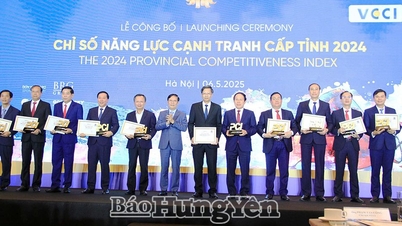


![[Infographic] Which 5 localities have the highest competitiveness index in Dong Nai in 2024?](https://vphoto.vietnam.vn/thumb/402x226/vietnam/resource/IMAGE/2025/5/6/1f1308f56f8e46df9141036db06f5ec6)










![[Photo] Overseas Vietnamese in France review history through special supplement commemorating 50 years of national reunification](https://vphoto.vietnam.vn/thumb/1200x675/vietnam/resource/IMAGE/2025/5/6/e92838061d514fceb6edc82f751aafef)







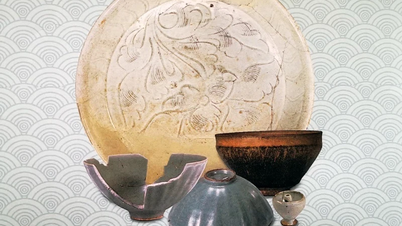



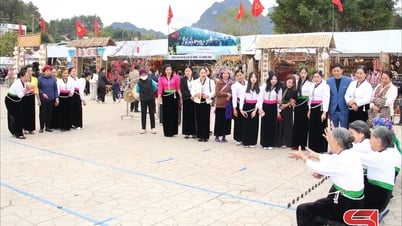



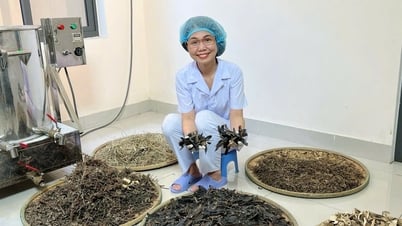
















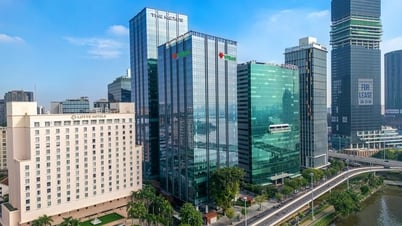








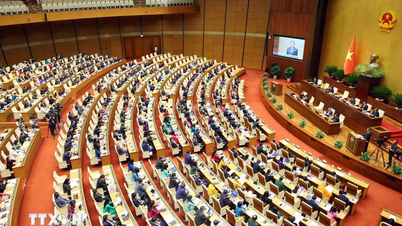




















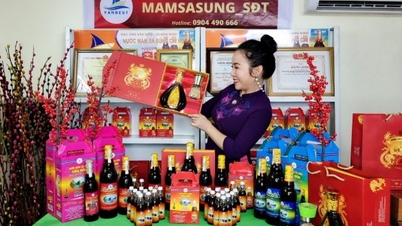





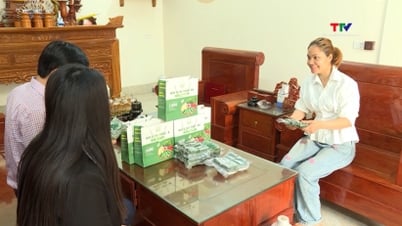

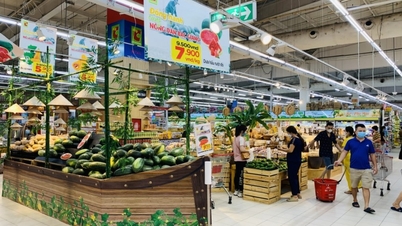

Comment (0)